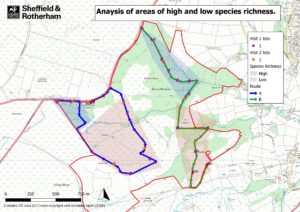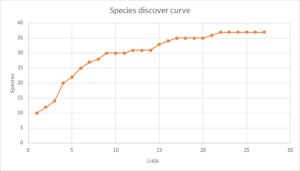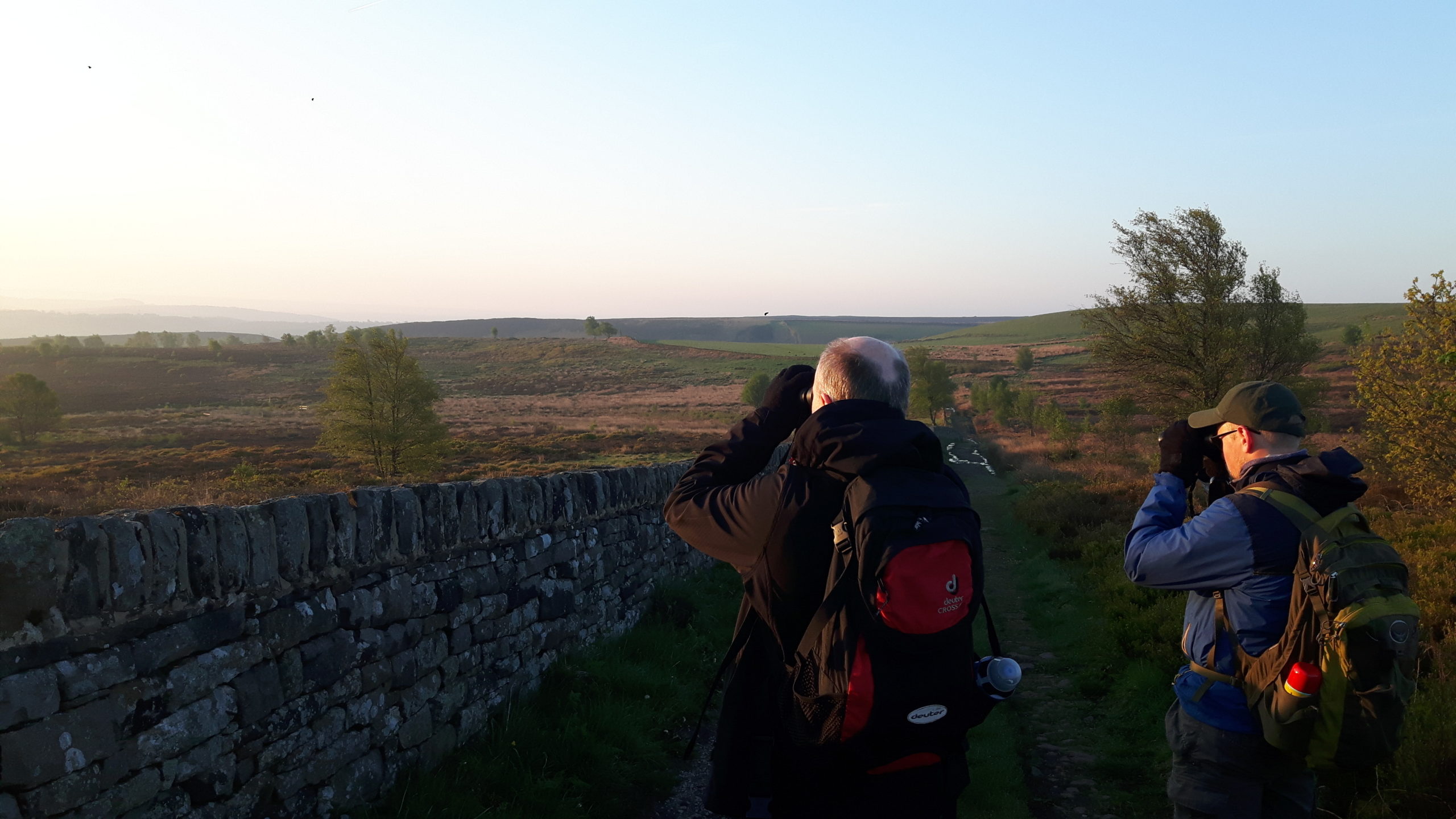July saw our volunteers complete surveying at Blacka Moor nature reserve looking at bird species richness, thanks to money raised by National Lottery players as part of our Data for Nature project. A total of 37 species were recorded including Wood Warbler, Tree Pipit, Curlew, Great Spotted Woodpecker and Cuckoo.
The survey was carried out using the Mackinnon Lists method. The Mackinnon Lists method is a technique where surveyors walk a route of the site and make short lists of species encountered, not repeating the same species in a list. When each new list is started, the surveyors make a waypoint using a GPS, repeating species recorded in previous lists. The first few lists have lots of new species encounters in them, but by the last lists the amount of new species encountered drops to one, or zero.
This can tell us a few things. Firstly, we end up with a list of species recorded on site, giving us a species richness total. Secondly, the species discovery curve (i.e. the number of new species recorded) will flatten out, meaning that we can be relatively sure that we have recorded the site accurately and even if there are species we might not pick up, it still gives us a snap shot of the nature reserve. Thirdly, we are able to map out the density of new lists started. If surveyors are getting through lists quickly, this tells us that they are encountering lots of species in a short space of time, meaning that that particular area of the site has high species richness. Or alternatively if surveyors take longer to complete a list, this highlights areas of low species richness. Finally, the amount of times a species occurs in all of the lists is called the frequency, enabling us to see what species are more common, and over time allows us to track species trends.
Pete Tomlin, Senior Data Management and Monitoring Officer said:
“Our volunteer bird surveyors have done sterling work, getting up at the crack of dawn to help us monitor the bird population at Blacka Moor Nature Reserve. The data they have collected is invaluable for us, helping us get a snapshot of the reserve as it stands, and also enabling us to make quantifiable comparisons as we continue to roll our new monitoring approach across our nature reserves and of course when we repeat this survey at Blacka Moor in years to come.”
See the results from the bird species richness survey at Blacka Moor nature reserve below.



This bird species richness survey was part of the Sheffield and Rotherham Data for Nature project, an initiative funded by a grant of £94,800 from the National Lottery Heritage Fund, which will help the Trust understand the wildlife and habitats on the nature reserves in more detail. The project will work towards improving the Trust’s ecological monitoring and data collection, by creating and implementing a robust monitoring framework, increasing our capacity to collect data on our reserves and engaging with members, volunteers and the public to share the findings of our work and enthuse people to collect biological records of their own.
Find out more about the Data for Nature project here.
